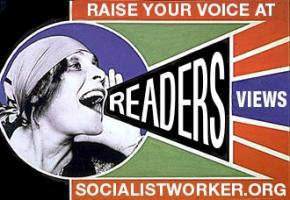What we’ll need to take on the right
writes from Connecticut about a local experience of protesting the right.
ACTIVISTS AROUND the country who have engaged in resistance to Trump and the emerging far right over the past few months have gained valuable experience as to what works and what doesn't--for example, with the counterprotests against the mobilizations of the far right in Berkeley, California.
This brief report is an attempt to explain how and why a recent anti-Trump protest in New London, reported on in Socialist Worker last week, was successful in countering the right. Although it wasn't as dramatic as other mobilizations nationally involving the right and left, there are some positive lessons that can be taken it.
As SW reported, a counterdemonstration against Trump's commencement address at the U.S. Coast Guard Academy drew 350 people, vastly outnumbering the 50 or so Trump supporters.
The protest could have taken an ugly turn at any moment as both pro-Trump and anti-Trump demonstrators were granted permitted access to the same protest space, and the police were out in force. I think the following characteristics, interrelated and mutually reinforcing one another, led to a successful mobilization.
1. The most important factor in the success of the protest was that those protesting Trump outnumbered Trump supporters.
2. How was this accomplished? By having a coalition of left groups, called Unify and Resist, that met regularly to plan for the protest, that built support in New London and surrounding towns, that offered mutual support to participation organizations. Because the coalition was at the heart of the organizing, it increased the likelihood that we would have large numbers to counter the right.
3. The Unify and Resist coalition anticipated escalation with Trump supporters at the protest as a central concern, so it developed a tactical approach that turned out to be effective.
Days before the protest, the coalition organized training for "peacekeepers"--people who would respond quickly if escalations occurred between counterprotesters and Trump supporters. The peacekeepers wore distinctive shirts that could easily be identified. The peacekeepers' marshaling of the protest decreased the likelihood of a police crackdown.
4. Because of this, the coalition was able to keep protesters safe from both Trump right-wingers and the cops. Because the counterdemonstrators had a sense of safety, they could channel their political voices with chanting, effectively countering the hate speech from Trump supporters, despite their advantage of amplification equipment.
And in turn, the success of the counterdemonstration gave those protesting Trump a sense of political confidence in countering the right that they can bring to the next struggle.



